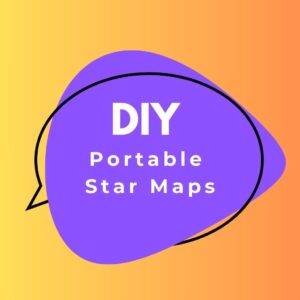This site contains affiliate links to products. I may receive a commission for purchases made through these links.
Ever dreamt of gazing at the stars, not from your backyard, but from a place where the Milky Way’s full splendor is on display? If so, you’re not alone. Astro-tourism is rapidly gaining popularity as more people seek out the world’s darkest skies. I’m here to guide you on this interstellar journey.
Planning an astro-tourism adventure isn’t as daunting as it may seem. With the right tools and a bit of guidance, you’ll be on your way to experiencing the cosmos like never before. Whether you’re an amateur stargazer or a seasoned astronomer, this step-by-step guide is designed to help you plan your ultimate astro-tourism adventure.
Choosing the perfect location
Success in astro-tourism revolves around choosing the right location. A key factor, of course, is sky darkness. When planning my astro-tourism adventures, I look for places far removed from city lights, where the skies are at their darkest.
Consider making use of tools like the International Dark Sky Association’s map. This tool identifies ‘Dark Sky Places’ around the globe. These are spots recognized for their exceptional quality of starry nights. Yet, sky darkness isn’t the only factor to consider.
The type of celestial bodies you want to observe also plays a significant role. For example, certain locations favor the observation of specific constellations, phenomena like the Northern Lights, or sightings of the Milky Way. Research is crucial. Online platforms like Stellarium and Sky Guide offer information about celestial events visible from your chosen location.
Many astro-tourists overlook climate conditions. However, in my experience, weather is a crucial aspect of successful observation. Unpredictable rainfall, dense cloud cover or high humidity can obscure your view. Keep in mind seasonal variations that may affect the local climate. Observing sites in deserts or high-altitude locations often provide the clearest skies.
In addition, your comfort and safety are also paramount. Remote, dark-sky places can sometimes be challenging to access or require specific survival skills. Also, you may need to bring additional equipment, clothing or provisions depending on the location.
While choosing the perfect location is seldom easy, these factors will guide you in the right direction. So, as you prepare for your astro-tourism adventure, remember to balance sky darkness, your astronomical interests, weather conditions, and personal comfort.
Researching the best time to visit
The next crucial step falls onto determining the best time to visit your chosen astro-tourism destination. This depends largely on what you’re most interested in observing: planets, meteor showers, galaxies, or maybe you want to catch the ethereal Northern Lights. Each celestial sight has its own optimal viewing season that justifies careful planning.
Meteor showers, for instance, follow a predictable schedule. Famous showers, like the Orionids and Perseids, happen around October and August respectively. On the other hand, if you’re a planet enthusiast, remember that the five planets visible to the naked eye – Mercury, Venus, Mars, Jupiter, and Saturn – go through periods of ‘greatest visibility’ throughout the year.
| Meteor Shower | Month |
|---|---|
| Orionids | October |
| Perseids | August |
| Planet | Visibility Varies |
|---|---|
| Mercury | Throughout the year |
| Venus | Throughout the year |
| Mars | Throughout the year |
| Jupiter | Throughout the year |
| Saturn | Throughout the year |
If it’s the magical Aurora Borealis you’d like to witness, its strongest and most frequent appearances are generally between September and April. Once you’ve pinpointed your celestial spectacle, consider the moon phases as well. Light from a full moon can overwhelm dimmer stars, planets, and meteors, so it’s often best to plan around new moon phases when the sky is darkest.
Always check for local weather patterns too; since clouds, rain, or fog can entirely ruin even a meticulously planned trip. Websites or apps that offer detailed, long-term forecasts give you the much-needed information you’ll require for this step.
## Packing Essential Equipment
Packing essential equipment
As we’ve discovered, selecting the right location and timing for your astro-tourism trip plays a crucial role in your venture. Now, it’s time to move on to the next significant step: packing essential equipment.
Choosing the Right Telescope for Astro-Tourism
The first item on your packing list ought to be a telescope. The type of telescope you choose largely depends on what celestial bodies you’re aiming to observe. Various models exist, each catering to different visual experiences of the night sky. For example, if you’re interested in viewing galaxies and nebulae, a telescope with a larger aperture is your best bet. On the other hand, those interested in viewing the details of the Moon or planets will want a telescope with high magnification power.
Selecting the Suitable Binoculars
Though overlooked, don’t underestimate the power of a good pair of binoculars. A high-quality binocular can give you a wide field of view, perfect for observing constellations or meteor showers. In fact, if portability is a concern for you, binoculars might be a superior choice to a telescope.
Packing Other Essentials
Apart from your telescope and binoculars, there are other items that are simply crucial for your astro-tourism adventure. Here’s a shortlist:
- Astronomy Books and Star Charts: These resources will guide you in identifying various celestial bodies. Plus, they provide valuable context and information about what you’re observing.
- Red Flashlight or Headlamp: Red light preserves your night vision better than standard white light, making it easier to navigate in the dark while you’re observing the heavens.
- Warm Clothing and Camping Gear: If you’re venturing out at night or in cold areas, proper gear is a must for comfort and safety.
Just remember: your astro-tourism experience is directly influenced by the equipment you bring with you, so it’s worth investing some time and energy into packing wisely. Up next, we’ll discuss enhancing your astro-tourism experience through community involvement and educational opportunities.
Booking accommodations and transportation
After you’ve decided on the perfect location and have all your essential equipment packed, the next step in planning your astro-tourism adventure is Booking accommodations and transportation.
When it comes to accommodations, you’ll need to think a bit outside the box. Since your primary activity will be looking at the night sky, you’ll want to find accommodations that support that. Look for places off the beaten path where light pollution is minimal. In some popular astro-tourism locations, you’ll find cabins, lodges, or even entire parks designed with stargazers in mind.
Some astro-friendly accommodations go the extra mile, offering telescopes for use or nightly stargazing sessions led by professional astronomers. Just imagine sitting by the fire, sipping a warm drink, and learning about the constellations from a pro. It’s an experience you’ll never forget!
Transportation is another thing to think about. Depending on your destination, you might need to rent a car or hire a driver. The benefit of astro-tourism is that you’re not tied to big city centers. So, while public transportation might not be an option, it’s often easier (and cheaper) to rent a vehicle.
Again, consider your destination carefully. If you’re going to a remote location or national park, for example, you’ll need a vehicle that can handle rough terrain. You’ll also want to ensure your vehicle has ample space for all your gear. The last thing you want is to arrive at your destination and discover you can’t partake in mid-night stargazing sessions because your telescope won’t fit in your compact rental car!
Preparing for the weather conditions
When it comes to astro-tourism, preparing for the weather conditions is key. Stargazing is an outdoor activity and conditions such as cold temperatures, wind, and precipitation can significantly impact your comfort, safety, and overall experience.
It’s important to remember that temperatures can drastically drop at night, especially in remote areas or at high altitudes. Bringing along warm clothing is a must. Layer up with a moisture-wicking base layer, an insulating layer for warmth, and a waterproof or windproof outer layer. Don’t forget about warm socks, gloves, a cozy hat, and even a thermal blanket.
Wind can also pose challenges, making the night feel even colder and potentially disturbing telescope setup or star photography equipment. A good windbreaker or poncho can prove invaluable.
Rain or snow, on the other hand, can be show stoppers. Wet conditions aren’t suitable for most astronomy equipment, and rain or snow can obscure the sky entirely. Check out weather forecasts for your destination well in advance and plan accordingly.
Let’s not forget about the importance of visibility. Clouds can be the enemy of stargazers, effectively hiding the celestial bodies you’re hoping to see. I recommend checking a cloud cover forecast, such as those provided by many meteorology websites. These reports can give you an idea of what to expect in terms of cloud cover and visibility on your stargazing nights.
So, you’re well taken care of in terms of comfort and keeping your equipment safe-but what about your eyes, the most important stargazing tools of all? Did you know that very bright or glaring light can negatively affect your night vision? It’s beneficial to bring a red flashlight, which will provide light without affecting your adjusted night vision.
Lastly, remember that your astro-tourism adventure may likely involve some downtime during daylight hours. Don’t overlook packing appropriately for daytime weather conditions as well; sunscreen, hats, and reusable water bottles are fundamental. By taking the time to prepare appropriately for all weather conditions, you can ensure your astro-tourism journey is as enjoyable and memorable as possible.
Conclusion
So you’re all set to embark on your astro-tourism adventure. You’ve got your warm clothing, windbreaker, and red flashlight packed. You’re ready for whatever the weather throws at you, day or night. Remember, it’s not just about the stars, but also the journey. It’s about immersing yourself in the beauty of the night sky and respecting the natural environment. So don’t forget to check the weather forecasts, cloud cover, and pack for daytime conditions too. Keep your eyes on the skies but don’t forget to enjoy the ride. Here’s to clear skies and unforgettable stargazing experiences!
Frequently Asked Questions
What should I pack for astro-tourism?
You should pack warm clothing like layers, socks, gloves, and a hat for the potential drop in temperatures during nighttime. Additionally, bring a windbreaker or a poncho to protect against wind, a red flashlight to preserve night vision, and daytime necessities like sunscreen, hat, and reusable water bottle.
How do weather conditions affect astro-tourism?
Weather conditions significantly impact astro-tourism. Rain or snow can hinder your stargazing experience. Hence, it’s advised to check weather and cloud cover forecasts prior to your trip to enjoy unhindered visibility of the sky.
Why is a red flashlight recommended for astro-tourism?
A red flashlight is recommended because it helps preserve night vision while stargazing, ensuring that the dark surroundings are not heavily interrupted by the light emitted from the flashlight.
How can I prepare for varying weather conditions during astro-tourism?
Keep an eye on the weather forecasts and specifically the cloud cover forecasts. Pack appropriate clothing and items for both daytime and nighttime weather conditions. These include warm clothes for nights and practical items like sunscreen and reusable water bottles for daytime.
Why do I need to consider daytime weather for astro-tourism?
Even though the main activity of astro-tourism takes place at night, you also need to consider daytime conditions. This is because you would still need to move around and engage in other activities during the day for which you will require items like sunscreen, hats, and reusable water bottles.



